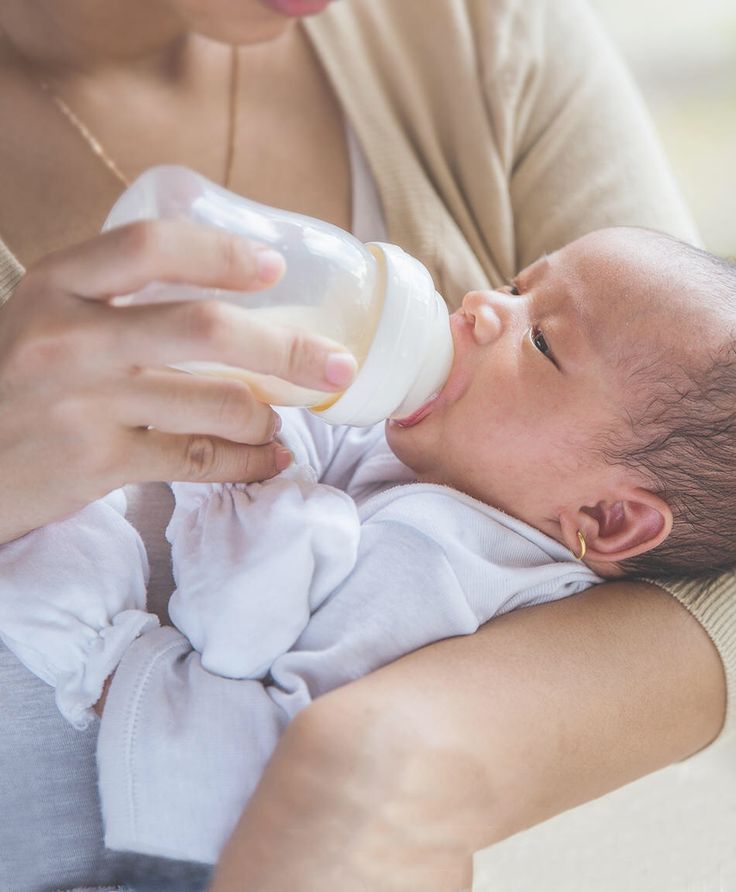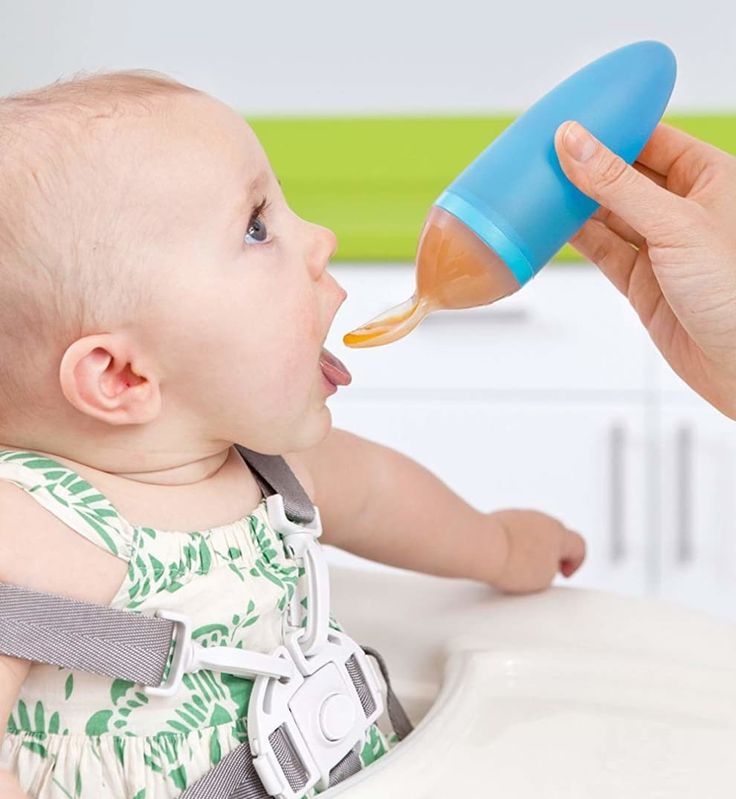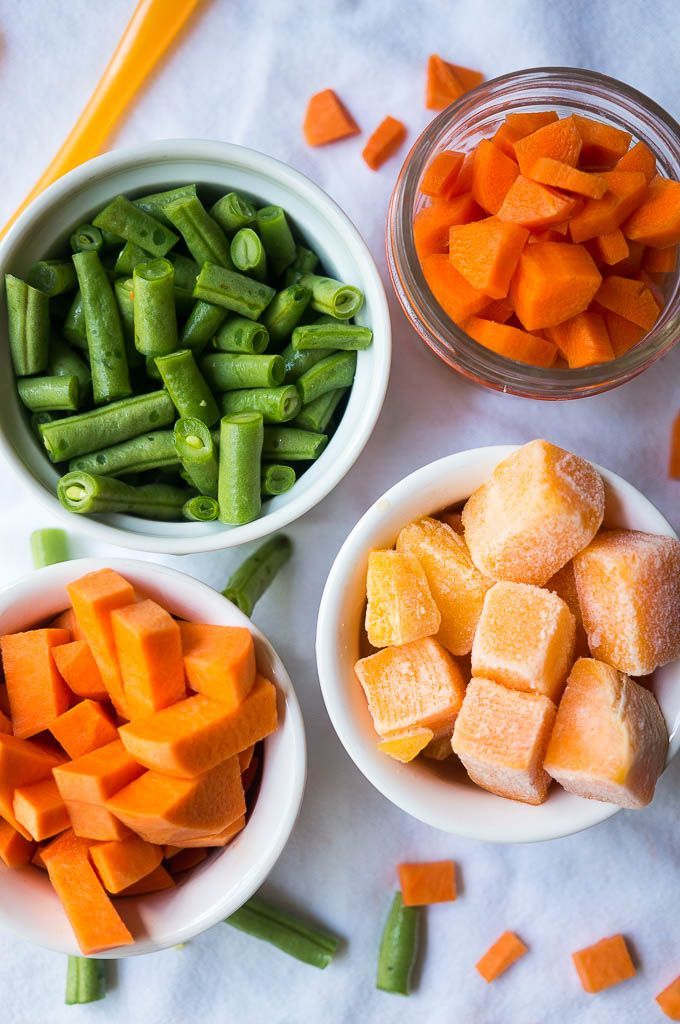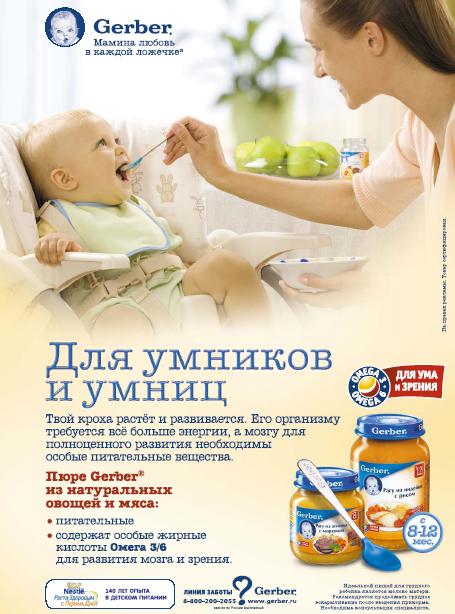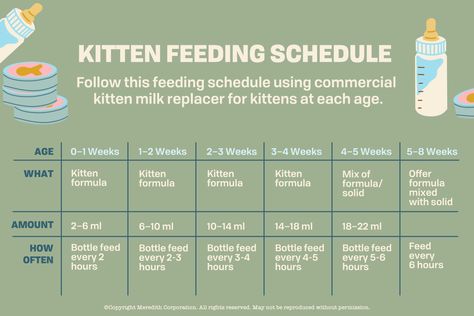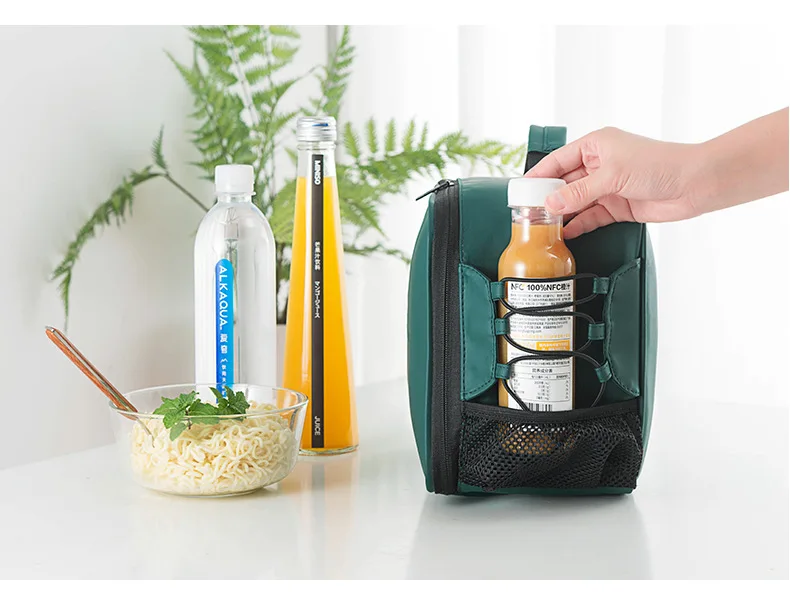What to feed your baby at 11 months
A Sample Routine to Follow
What can babies eat at 11 months?
At 11 months, many babies have developed the ability to feed themselves. They might be able to awkwardly hold a spoon to shovel mashed food into their mouths. More predominantly, however, they are able to hold the food in their fingers and put it in the mouth. While this might be messy, it’s all part of the normal growth and development process.
At this stage in life, the baby does not depend on breast milk alone — despite its benefits. You might have started weaning her off the breast and introduced some solid foods into her diet around the 6-month mark.
Take a quiz
Find out what you can do with our Health Assistant
As she grows older, you need to diversify the kind of food you give her so that she can develop her palate and be able to draw nutrition from more than one source. So, what baby foods should you add to the diet of your 11-month-old?
Here are some options:
- Eggs contain plenty of nutrients — especially the yolks — and are easy to eat and digest
- Fruits contain various vitamins and minerals, and small teeth can easily bite into bananas, apples, and oranges (remember to cut up the fruits into small, bite-sized pieces for your baby)
- Fish and poultry
- Leafy greens contain iron, which is absent in breast milk.
- Dairy products (like yogurt and cheese), though it’s advisable to delay giving cow’s milk until your baby is older than one year
- Dry cereal
- Crackers
How much should an 11-month-old baby eat?
As the first year of life comes to a close, your baby is able to eat most of what the rest of the family is having at their meal times. Obviously, however, the baby will eat far smaller amounts than the rest of you.
A loose rule of thumb is that the baby usually takes down three main meals during the course of the day and a couple of snacks in between the meals. When the baby eats is usually dependent on their appetite and your schedule.
Delving deeper into the quantities of food per day, it’s advisable that you give the baby up to 3 tablespoons of dairy products. For meat and the other proteins, you may give the baby up to 4 tablespoons. It’s also advisable that you give no more than half a cup of fruits, vegetables, and cereals.
You should keep a close watch on how much your baby is eating.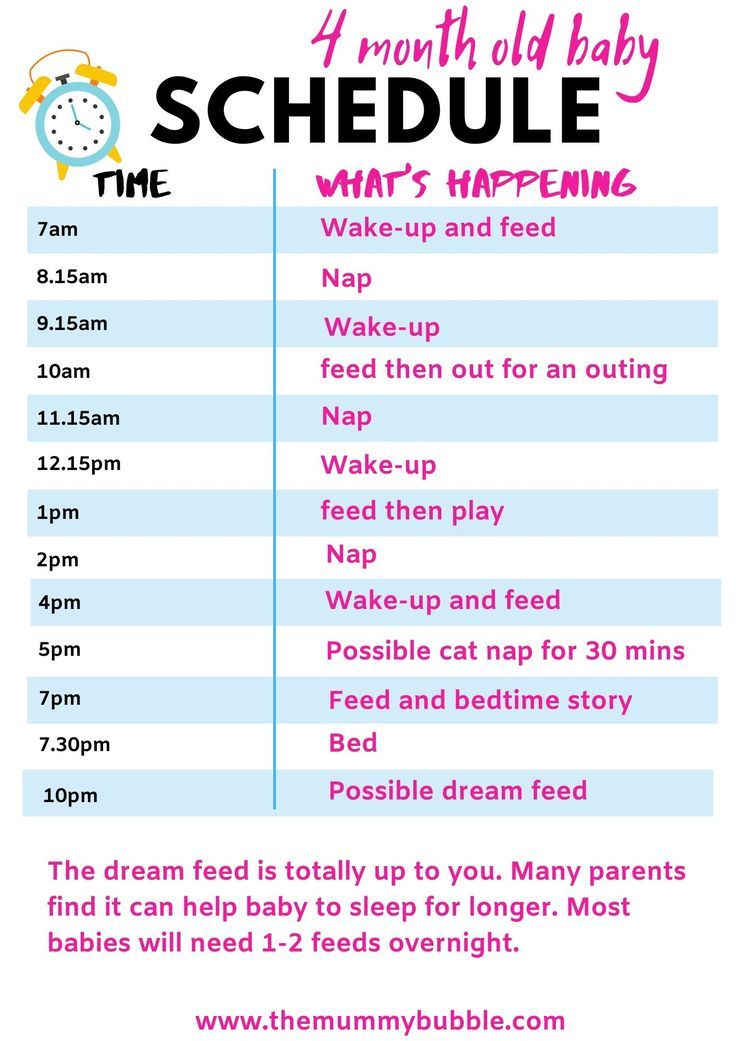 If they have high food reinforcement, they are likely to develop adiposity and obesity later on in life. Food reinforcement refers to how hard your baby will try to get more food. At this age, you'll notice high food reinforcement through tantrums and crying when you don’t provide the food they’re craving.
If they have high food reinforcement, they are likely to develop adiposity and obesity later on in life. Food reinforcement refers to how hard your baby will try to get more food. At this age, you'll notice high food reinforcement through tantrums and crying when you don’t provide the food they’re craving.
How much formula for an 11-month-old baby?
If you cease to breastfeed and instead feed your baby formula, you need to make sure that you provide the baby with the right amount. Note, however, that studies suggest that a shorter duration of breastfeeding can cause greater food reinforcement in infants. This is because when you feed the baby via a bottle, you provide a set volume of formula. In such a case, you might notice the natural cues that indicate the baby is full.
For this reason, you need to control how much formula you give the baby. The recommended amount is around 720 milliliters (ml) of formula per day. Initially, you might have given this amount divided across three meals. However, now that she is on an 11-month-old eating schedule, she can have one big formula feed per day.
However, now that she is on an 11-month-old eating schedule, she can have one big formula feed per day.
Keep in mind, of course, that not all babies are the same therefore need different amounts of formula to be satisfied. To get the correct amount of formula, multiply your baby’s weight in pounds by 2 and 2.5. The ideal daily amount of formula for your little one should fall between the resulting values.
On average, the daily caloric requirements for 11-month-old babies are around 920 kcal/day for boys and around 865 kcal/day for girls.
Sample 11-month-old feeding schedule
In the earlier months, it was easy to feed your baby because the options were quite limited and handy (breast milk mainly). You could even pump and store the milk for impromptu feeds.
With an increasing range of food for 11-month-old babies, you might find it more challenging to provide a complete meal. You also need to be able to fit these meals into a schedule so that your baby is getting the most out of the day.
Here is a sample 11-month-old feeding schedule around which you can model yours:
1. Breakfast
- 120 ml to 180 ml of breast milk or formula
- Quarter to half a cup of mashed boiled egg or cereal
- 4 ounces of fruit
2. Midmorning snack
- 120 ml to 180 ml of breast milk, formula, or water
- 2 ounces of diced cheese
3. Lunch
- 60 ml to 120 ml of yogurt or quarter to half a cup of meat
- Quarter to half a cup of veggies
- 120 ml to 180 ml of breast milk or formula
4. Afternoon snack
- 1 teething biscuit or cracker
- A quarter cup of diced fruit, if she can feed herself
5. Dinner
- 120 ml to180 ml of breast milk or formula
- 2 ounces of poultry or meat
- 2 to 4 ounces of pasta, rice, or potatoes
- A quarter cup of fruit
Before you tuck her in for bedtime, give her an increased amount of breast milk, formula, or water — around 180 ml to 240 ml.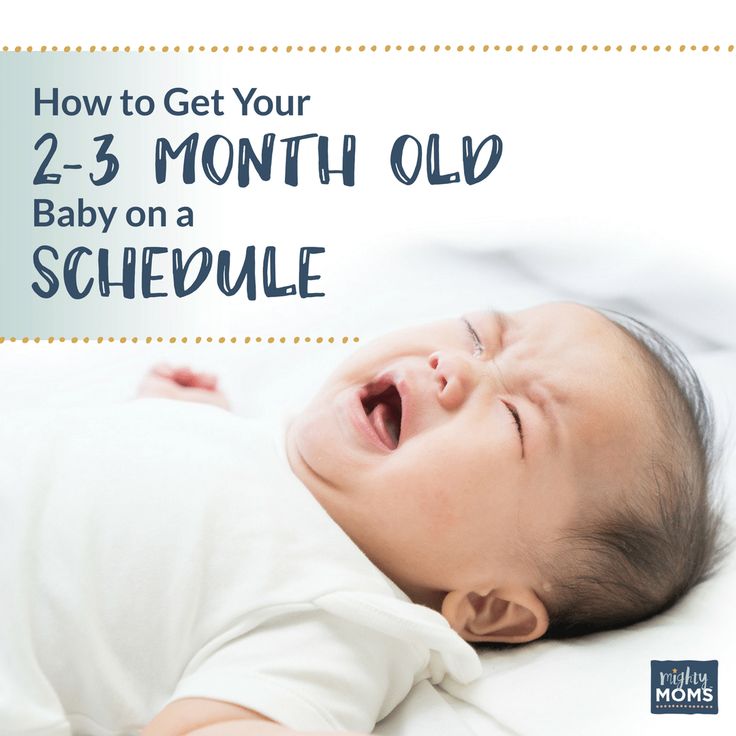
At this stage, your baby generally has a more defined eating routine. Create a schedule that works for both of you so that you can also get time to run errands. The sample menu above should give you a good idea of what the baby's diet should consist of.
Baby Food for 11-Month-Olds: Menus, Recipes, and Ideas
What are good baby foods for 11-month-olds?
It may seem like your baby was breastfeeding exclusively until very recently, but at 11 months old, your baby can eat many of the same foods that the rest of the family eats.
There are still some foods that they shouldn't have and certain preparation methods that you need to follow. Here are some of the things to avoid when planning a menu for an 11-month-old:
- Sugar — Your baby doesn't need to consume added sugar, and this ingredient can lead to tooth decay. Avoid giving your baby sugary snacks or drinks, and don't add extra sugar to their food. Instead, offer them a variety of fresh, non-citrus fruit.
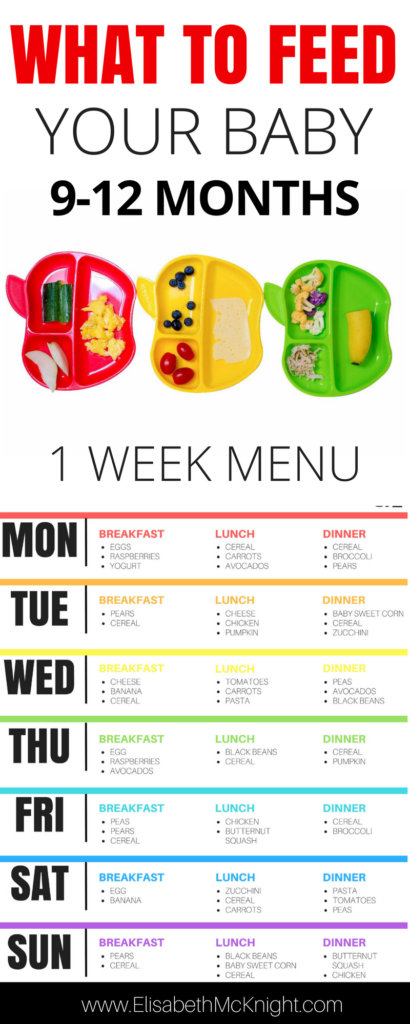
- Salt — Added salt isn't good for your baby's kidneys. You don't need to add salt to their food. If you're cooking a family meal that your baby can eat, set a portion aside for the baby before you season it. Avoid salty snacks such as salty crackers, chips, and deli meats.
- Honey — Honey is delicious, but it can contain bacteria that cause botulism. Avoid giving your baby honey until their first birthday.
- Unpasteurized dairy products — Babies can eat pasteurized cheese when they're six months old, but unpasteurized cheeses can be harmful. Cheeses made with unpasteurized milk or mold-ripened cheeses, such as roquefort and brie, can contain a bacteria called listeria. Instead, offer your baby cheddar cheese, cottage cheese, and cream cheese.
- Cow's milk — Dairy products, such as yogurt or pasteurized cheeses, are a great addition to your 11-month-old baby's food list. However, they shouldn't drink cow's milk until they're at least one year old.
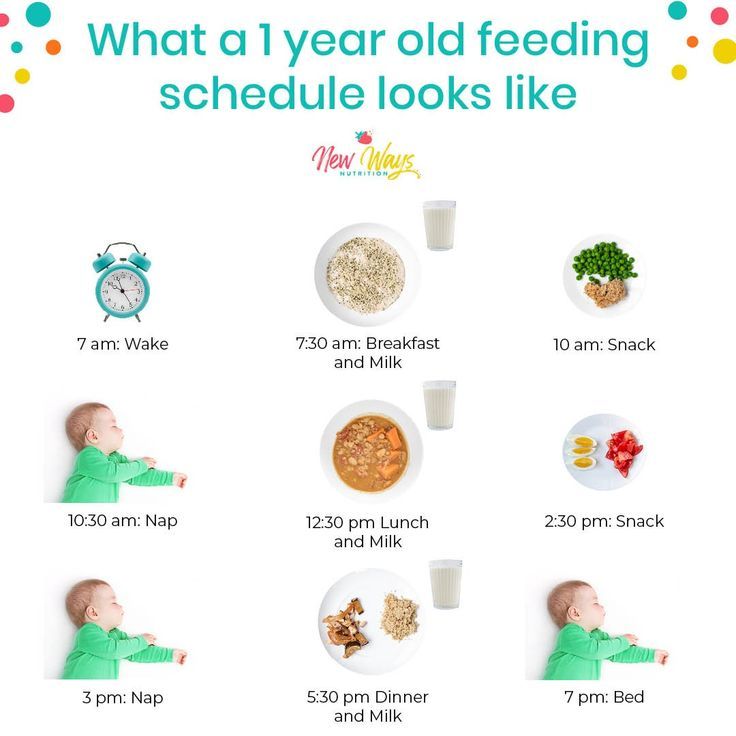 Instead, give them formula, breastfeed them, or provide breast milk that was stored previously.
Instead, give them formula, breastfeed them, or provide breast milk that was stored previously. - Saturated fats — Avoid fried foods, processed meats, butter, baked desserts, cream, and mayonnaise.
- Highly processed foods — Your baby doesn't need to consume the additives, artificial colors, and flavorings that come in lots of processed foods such as candy, breakfast cereals, microwave meals, ice cream, and chips. These foods should be an occasional snack rather than a dietary staple.
- Whole nuts — Nuts and seeds can pose a choking hazard for your 11-month-old baby. Instead, you can offer them nut butter.
- Uncooked eggs — Make sure any eggs your baby eats are fully cooked to avoid possible salmonella infections. Avoid foods that contain raw eggs, such as cake batter or homemade mayonnaise.
- Raw fish or seafood — These foods carry an increased risk of food poisoning. Stick to fully cooked fish until your baby is at least one year old.

Take a quiz
Find out what you can do with our Health Assistant
How much food does an 11-month-old need?
It might be messy at first, but allowing babies to eat on their own can help them develop their fine motor skills, independence, coordination, and body and food awareness. Don't force your baby to eat. Forcing babies to finish every meal can cause them to negatively impact their relationship with food. Make sure that you cut your baby's food into small pieces, and allow them to feed themselves while keeping a close eye on them.
Here's a quick guide to the portion sizes that your 11-month-old baby needs each day:
- Protein: Up to 4 tablespoons
- Vegetables: Up to half a cup
- Fruits: Up to half a cup
- Cereals: Up to half a cup
- Dairy: Up to 3 tablespoons
- Breast milk or formula: 22 to 32 oz
If your child has already stopped breastfeeding, make sure they're still drinking formula or stored breast milk every day.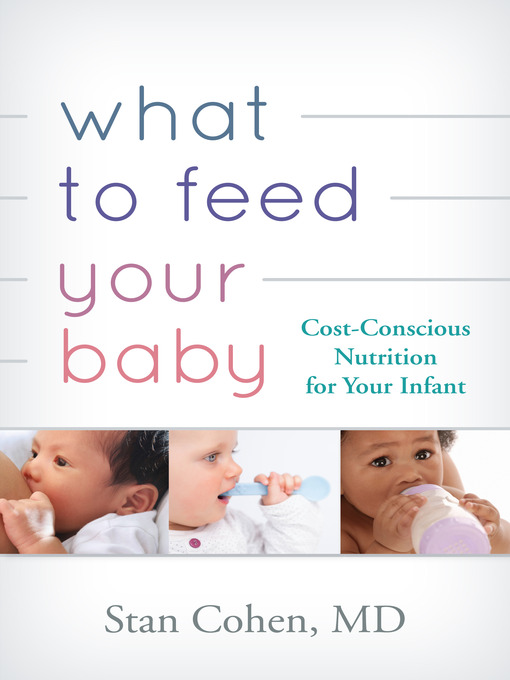 You can also follow these tips to increase your breast milk if your supply has gotten too low. Breast milk or formula can provide up to half of your child's nutritional requirements until they're a year old. It's very likely that they'll want to breastfeed less frequently once solid foods are introduced; therefore, breastfeeding should be actively encouraged at this age.
You can also follow these tips to increase your breast milk if your supply has gotten too low. Breast milk or formula can provide up to half of your child's nutritional requirements until they're a year old. It's very likely that they'll want to breastfeed less frequently once solid foods are introduced; therefore, breastfeeding should be actively encouraged at this age.
Menu for 11-month-old babies
Here are some meal ideas for your 11-month-old baby:
Breakfast:
- Eggs and toast
- Blueberry whole-wheat pancakes
- Cheese sandwich
Lunch:
- Chicken and vegetables
- Macaroni and cheese
- Homemade lasagna
Dinner:
- Creamy chicken and vegetable soup
- Lean steak and vegetables
- Cereal with fruit
Snacks:
- Fruits and peanut butter
- Yogurt with cereal or fruit
- Boiled eggs
Food ideas for 11-month-old babies
Here are some ideas to help you come up with new recipes for your 11-month-old baby:
- Try new ways to cook your baby's vegetables.
 Rather than sticking to the usual ways you cook your vegetables, try grilling or sauteing them so that your baby experiences new textures and flavors.
Rather than sticking to the usual ways you cook your vegetables, try grilling or sauteing them so that your baby experiences new textures and flavors. - Create homemade versions of your favorite foods. Your baby shouldn't be eating frozen lasagna or pizza, but you can cook healthier, homemade versions of your favorite meals so that they can try them.
- Only introduce one new food every couple of days. If you introduce too many new foods at once, and one of them causes an allergy, it will be hard to determine which one it was. Instead, introduce one food at a time and wait a few days before trying something else.
Recipes for 11-month-old babies
- Vegetable and chicken soup — Boil broccoli, potatoes, and a chicken breast. Then, blend the solid ingredients together and add some of the stock. This soup will have a creamy consistency, and you can even add some cheese on top.
- Homemade frozen smoothies — Freeze ripe bananas.
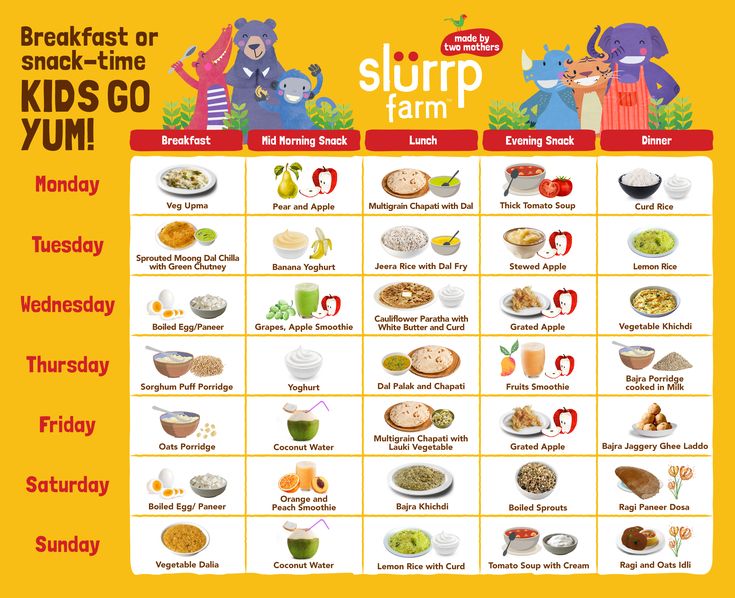 Once they're frozen, blend them until they're smooth. You can add other fruits such as strawberries and blueberries. Keep it in the freezer for a healthy, cool snack.
Once they're frozen, blend them until they're smooth. You can add other fruits such as strawberries and blueberries. Keep it in the freezer for a healthy, cool snack. - Homemade pizza — Use pita bread for the crust and puree some peeled tomatoes to make the sauce. Top with mozzarella cheese and fresh basil before placing it in the oven.
Food for your 11-month-old baby is very similar to food for the rest of the family. At this age, they'll be able to eat on their own and discover many wonderful new flavors, textures, and sensations. They'll be eating a piece of their own birthday cake very soon!
11 month old baby menu: approximate diet
Lyubov Troshina
Daily Baby author, mother of two girls
#nutrition #lure
The time for one-component purees is over. Now mom is free to experiment: there are a lot of products on the list of allowed products that can now be mixed, besides, the baby is already used to a denser consistency of dishes.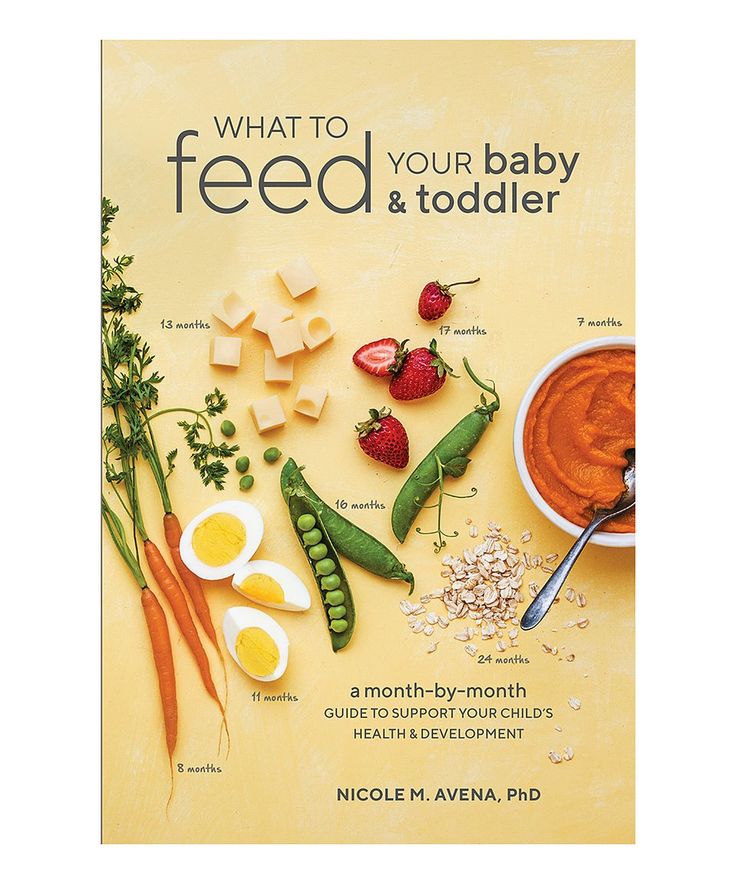 So, what to feed a baby at 11 months?
So, what to feed a baby at 11 months?
What to feed
The daily menu of an 11-month-old baby ideally includes products from all major groups of the food pyramid. Namely:
- Cereals . The baby can already have buckwheat, rice, corn, oatmeal, wheat and millet porridge. The approximate daily allowance for an eleven-month-old baby is 200 grams.
- Vegetables . Zucchini, broccoli, cauliflower and white cabbage, carrots, pumpkin, potatoes, beets, tomatoes, onions. A child can eat about 150 grams of vegetable dishes per day.
- Meat and fish . For a baby, it is better to cook rabbit, turkey, chicken and beef. The norm per day is 40-50 grams of meat puree from a boiled product or 80-100 grams of meat “in a jar”. As a meat portion, you can sometimes give dishes from offal: tongue, liver or heart. A couple of times a week it’s good to arrange a “fish day”. A serving of fish now can be 30-60 grams.
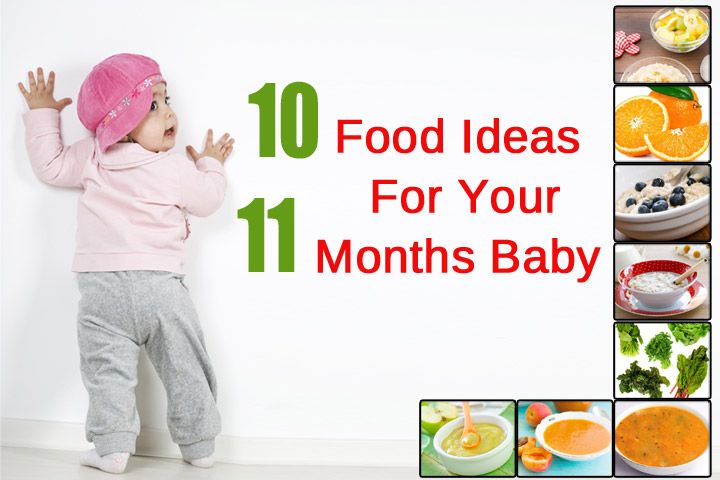 Among those allowed for baby food: sea - flounder, cod and pollock; river - hake, carp and river perch.
Among those allowed for baby food: sea - flounder, cod and pollock; river - hake, carp and river perch. - Dairy products . At this age, the child is advised to give no more than 50 grams of cottage cheese. Fermented milk drink - kefir, biokefir, biolact, yogurt - about 200 grams.
- Fruit . Among the most friendly to the baby's digestive system are apples, pears, bananas, peaches, apricots, plums, currants (white, black and red). The norm of fruit puree is about 90-100 grams.
- Egg . A couple of times a week it is useful to give the baby half a chicken yolk, or a whole quail. Eggs for this should be boiled "hard boiled". A short heat treatment with the “soft-boiled” or “pouched” options does not destroy salmonellosis pathogens.
- Oil . Vegetable oil goes well with vegetable dishes. The daily norm for a baby at 11 months is 6 grams. Creamy makes porridge tastier, 5 grams is enough for a child a day.

- Cookies . An eleven-month-old baby can be pampered with special baby biscuits. But you should not get carried away - two things a day are enough.
When to feed
It is not always possible to follow a strict regime with babies, but it is worth trying. Children who eat at regular intervals—with a maximum margin of error of 30 minutes—have better appetites and fewer digestion problems.
At 11 months, it is advised to feed the baby five times a day, keeping four hours between meals. Immediately after sleep and at night, the baby still receives breast milk or an adapted milk formula.
A classic breakfast is porridge, cottage cheese, sometimes egg yolk.
Lunch is usually served with vegetables and meat (fish or offal). But the meat portion also goes well with a cereal side dish. Then vegetables can be given for breakfast or dinner.
Fruit puree and any fermented milk drink are also suitable for dinner.
What to drink
Plain water is what a child needs to maintain water balance. You can buy bottled baby water or use boiled tap water. In second place are compotes from berries, fruits or vegetables familiar to the baby. Preferably without sugar.
Fruits and berries that are familiar to babies can also be used to make sparse jelly. The drink improves digestion, but since it is very high in calories, it is better not to give it to overweight children.
You should not get carried away with juices, although according to the norms they are allowed to drink 60-80 ml every day. They contain a lot of sugar and this is a disaster for delicate milk teeth. And the juices are rich in organic acids, which irritate the mucous membranes of the gastrointestinal tract.
What not to feed
There are foods on which, in the imagination of parents, there should be a “sign of an outcast”. They are absolutely not allowed in complementary foods. These are any canned foods, pickled vegetables and fruits, smoked meats.
Sausages, wieners and other sausage products should not be given to a child at least until the age of three. The same applies to cakes, pastries, chocolate, glazed curds. These are too "heavy" sweets. If you want to pamper your baby with sweets, then it is better to give him dried fruits, marshmallows or marshmallows.
Milk - cow, goat - for children under one year old will only bring harm. There is a lot of phosphorus in the product, and the kidneys of a child under one year old do not know how to remove it correctly. As a result, along with phosphorus, the baby loses calcium and vitamin D, and this is dangerous for the development of a severe form of rickets.
Honey sometimes contains spores that cause botulism. They are dangerous only for children under one year old.
It is also a mistake to give the baby dishes with mayonnaise, mustard, horseradish, pepper, vinegar and hot sauces.
How to cook
Baby food can be boiled, steamed, baked and stewed.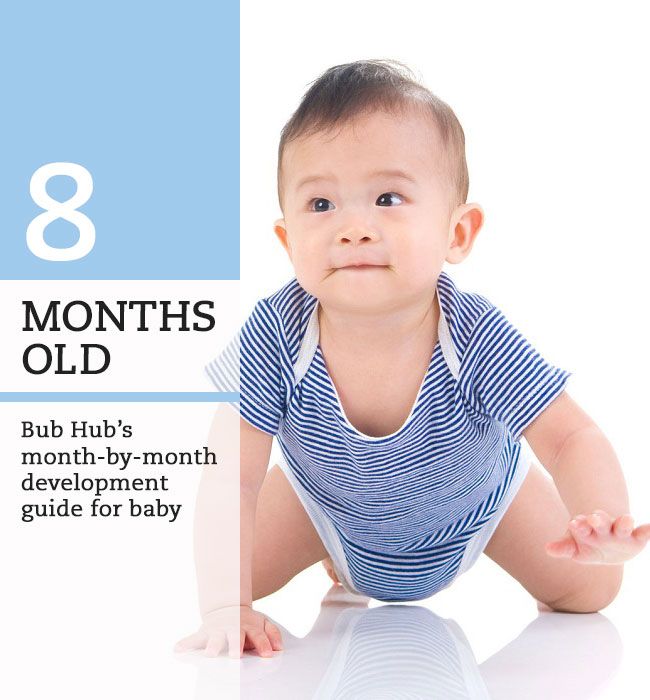 Fried foods are taboo in baby food.
Fried foods are taboo in baby food.
Vegetables and fruits no longer need to be thermally processed. They can be grated and served as a salad.
You can cook meatballs and meatballs from meat. Moreover, at the “sculpting” stage, it is permissible to prepare them for several days at once and put them in the freezer. The next time, all that remains is to get the product and heat it.
For juiciness, you can add vegetable puree to minced meat: zucchini, carrots, cauliflower.
At 11 months, pediatricians allow the child to cook soups with meat broth. But when the water boils for the first time, it is advised to drain it. The "primary" broth is too fatty and contains most of the harmful substances that could be in the meat.
You can already add some greens to the soup: dill, parsley. The leaves must first be finely chopped.
It makes sense to add vegetable and butter only to ready meals. Heat treatment deprives them of nutritional value.
Every day you have to cook anew. Alas, it is impossible to store dishes for the baby until the next day, otherwise they lose their nutritional value.
— share with your friends!
Read more
- Menu for a 9-month-old baby: a list of allowed foods and recipes for every day
- Menu for a 1 year old child: a detailed guide for parents
- 8 month old baby menu: new foods and rules
Diet for a child aged 9-12 months
By 9 months the main complementary foods have already been introduced, so the expansion of the child's diet continues. It is important to know that at this age the consistency of the products should change from homogenized to finely and coarsely ground.
A meat dish for an older child can be offered in the form of meatballs, which diversifies the child's diet and stimulates the formation of chewing skills. Canned meat industrial production for children over 8 months. - coarsely chopped, spices and spices (white pepper, celery, parsley, dill, onion, basil, thyme) can be added to them.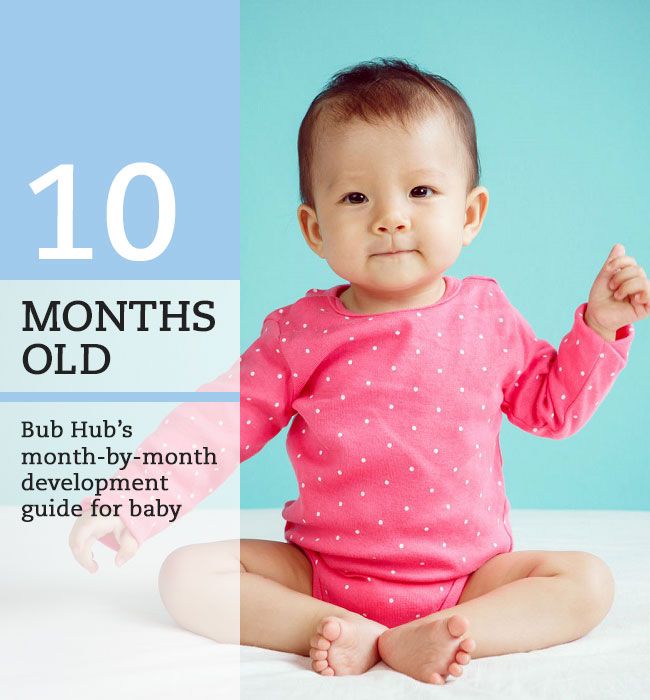
The volume of fish puree increases to 60 g per day by 12 months. Fish is given 2 times a week boiled without broth (instead of meat).
At this age, children's pasta can be offered to the child.
The number of children's biscuits and crackers is increased up to 10-15 g per day (2-3 biscuits).
By the year it is useful to add finely chopped fresh garden greens (dill, parsley) to various dishes, which significantly enriches the diet with vitamins and minerals.
Sample diet for a 12 month old child:
| breakfast 8 hours | Dairy-free or milk porridge* Butter Boiled egg yolk Fruit puree | 150-200 g about 1 tsp. 1/2 pcs 50 g |
| lunch 12 noon | Vegetable puree Vegetable oil Meat puree (meatballs) or fish Bread/crust Compote | 180 g |
| afternoon tea 4 pm | Breast milk (kefir or yogurt)** Cottage cheese Fruit puree Baby biscuits | 100 g 50 g 50-70 g 2 pcs |
| dinner 20 hours | Vegetables or porridge** Meat puree Vegetable oil Fruit juice | 180 g 20 g 1/2 tsp. 50 ml |
| at bedtime 11 p.m. | Breast milk (DMS)*** | 200 ml |
* - dairy-free porridge should be diluted with breast milk or infant formula that the child receives. Milk porridge is diluted with water.
** — daily volume of kefir or yogurt can be up to 200 ml,
*** — baby milk formula
Approximate diet of a 12-month-old child with an allergy to cow's milk proteins:
| breakfast 4 8 hours 5 | Dairy-free porridge* Vegetable oil Fruit puree | 150-200 g about 1 tsp.  50 g |
| lunch 12 noon | Vegetable puree Vegetable oil Meat puree/meatball Bread/rust Compote | 180 g about 1/2 tsp. 50-70 g 10 g 50 ml |
| afternoon tea 4 pm | Breast milk or formula for infants with cow's milk protein intolerance Fruit puree Rusk | 150-180 ml |
| dinner 20 hours | Vegetables or dairy-free porridge** Vegetable oil Meat puree Fruit juice | 180 g about 1/2 tsp. 30-40 g 50 ml |
| at bedtime 11 p.m. | Breast milk or formula for infants with intolerance to cow's milk proteins | 200 ml |
* - dairy-free porridge should be diluted with breast milk or therapeutic formula for children with intolerance to cow's milk proteins.


